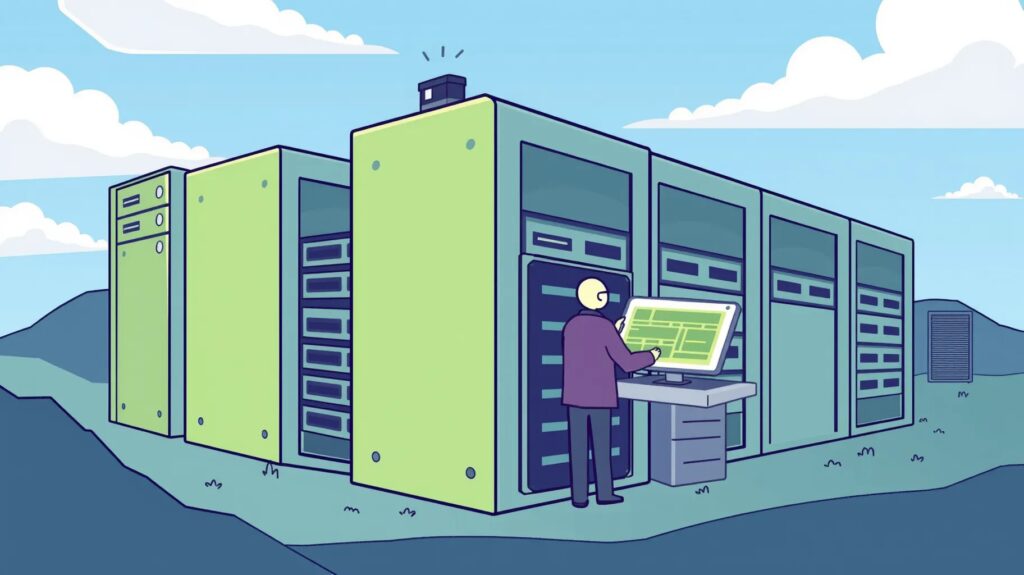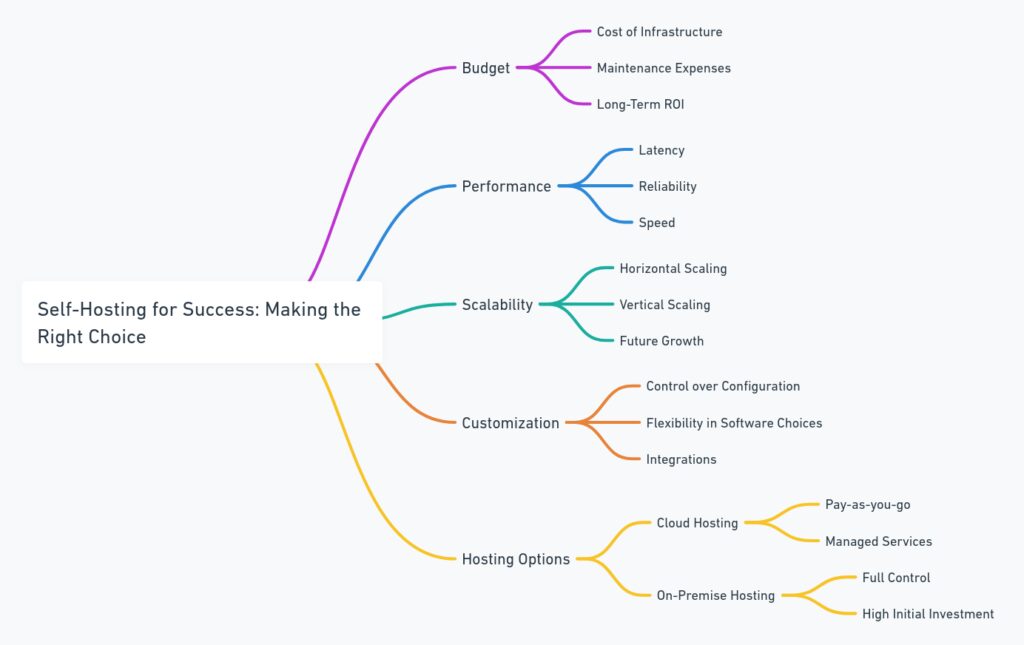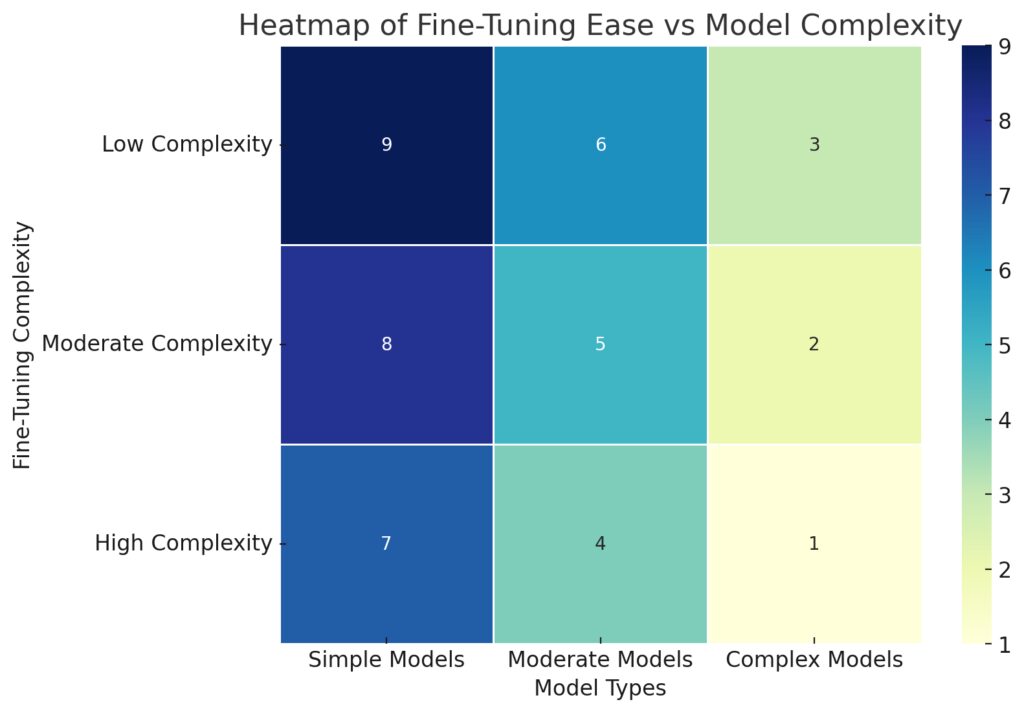
Open-Source LLMs: The Best Models for Self-Hosting
Exploring cutting-edge, self-hosted large language models (LLMs) in 2024
Large language models (LLMs) have revolutionized natural language processing, but the spotlight is increasingly shifting toward open-source models. Why?
Why Open-Source LLMs are Taking Over the AI Landscape
Large language models (LLMs) have revolutionized natural language processing, but the spotlight is increasingly shifting toward open-source models. Why? They offer more flexibility, control, and cost-effectiveness compared to proprietary models. For businesses and researchers, self-hosting these models has become not just a trend but a competitive advantage.
Open-source LLMs unlock customizability that proprietary solutions simply can’t. They let you adapt models to your unique needs, fine-tune for specialized tasks, or ensure that sensitive data stays in-house, without depending on third-party servers. But which models offer the best balance of performance and ease of self-hosting?
Let’s explore the top options in 2024, from efficiency-focused models to those excelling in deep contextual understanding.
Understanding Key Considerations Before Choosing an LLM
Before diving into specific models, it’s essential to think about what self-hosting involves. Whether you’re an AI hobbyist or a large enterprise, the right choice depends on a few key factors:
- Hardware requirements: Can your infrastructure handle high-resource models, or do you need something optimized for efficiency?
- Customizability: How easy is it to fine-tune the model for your needs?
- Community support: Does the model have active contributors and resources for troubleshooting?
- Licensing: Some open-source models are completely free, while others might have usage restrictions.
These considerations will help you choose a model that matches your capabilities and goals.
LLaMA 2: Meta’s Highly-Tuned Giant
Meta’s LLaMA 2 has emerged as a leading open-source LLM, offering incredible versatility for those who want to self-host without compromising on power. This model is highly regarded for its ability to handle complex queries and generate accurate, context-rich responses. Available in sizes from 7 billion to 70 billion parameters, it’s one of the more scalable open-source models, making it adaptable for a range of applications.
Why LLaMA 2 stands out:
- Ease of fine-tuning: Many developers praise its flexibility when adapting it for industry-specific language needs.
- Great for research and business: With support for multi-tasking and large datasets, LLaMA 2 is perfect for companies looking to build advanced AI systems in-house.
- Strong community: Being backed by Meta ensures there’s ongoing development and plenty of community-driven support.
However, LLaMA 2 does demand powerful hardware for self-hosting, especially the larger variants. It’s ideal if you have the resources to manage these demands.
GPT-J: High-Performance at Lower Costs
For users looking to self-host with a balance of performance and cost-efficiency, GPT-J by EleutherAI is an excellent choice. It’s a 6 billion-parameter model that delivers impressive results on general-purpose tasks without requiring cutting-edge hardware.
Notable features of GPT-J:
- Hardware-friendly: While it offers large-scale capabilities, GPT-J is less resource-intensive compared to other top-tier models.
- Open-source from the ground up: Unlike proprietary models, GPT-J is fully open-source with minimal licensing restrictions, making it a favorite among AI developers.
- Highly adaptable: GPT-J can be fine-tuned for specific use cases and performs well across various industries, from healthcare to finance.
If you’re looking for something that balances power with accessibility, GPT-J should definitely be on your radar. It’s also a good entry point for teams that are newer to AI deployment.
Falcon LLM: Speed Meets Precision
Developed by the Technology Innovation Institute (TII), Falcon LLM has quickly gained traction due to its blazing fast inference speeds and robust performance. This model is optimized for efficiency without sacrificing quality, making it ideal for businesses looking to process large volumes of data in real time.
Why Falcon LLM is worth considering:
- Speed optimization: Falcon LLM is tuned for efficiency, making it faster than many comparable models on the market.
- Community-driven: Being open-source with active updates means that Falcon is continuously improving through shared contributions.
- Great for low-latency applications: If your priority is real-time data processing, Falcon delivers—whether it’s for customer service chatbots or real-time analytics.
The trade-off with Falcon LLM is that it may not perform as well on highly complex or niche tasks as some larger models like LLaMA 2.

Mistral: Lean and Efficient Language Mastery
Newer on the scene but already making waves is Mistral. Built by former Meta researchers, this model focuses on being efficient without compromising on capability. Despite having fewer parameters (7 billion), Mistral outperforms many models with twice the size due to its innovative architecture.
Key advantages of Mistral:
- Compact yet powerful: Mistral’s ability to punch above its weight class makes it ideal for companies with limited computational resources but big AI ambitions.
- Lower operational costs: Because it requires less power to run, Mistral is perfect for budget-conscious teams.
- Tuned for specialized tasks: Mistral excels in specific language processing tasks like summarization, translation, and even creative writing, despite its smaller parameter count.
As more businesses look for efficient models that don’t sacrifice quality, Mistral is becoming a go-to for cost-effective self-hosting.
StableLM: Stability AI’s Answer to Accessible LLMs
StableLM is a relative newcomer, developed by Stability AI. It’s gaining popularity for its wide-ranging applications and flexible architecture, designed for ease of use in various industries. With a focus on democratizing access to AI, StableLM is positioned as a tool for both enterprises and individual developers who want to leverage AI without heavy financial or technical investments.
Why StableLM is worth your attention:
- Accessible and versatile: StableLM supports a wide range of applications, from conversational AI to more technical use cases like code generation and data analysis.
- Community-first development: StableLM benefits from a highly engaged open-source community, which means continuous updates and innovations.
- Affordable self-hosting: It’s designed to be easy to deploy even on smaller infrastructure setups, making it an attractive option for startups or educational projects.
If you’re new to the world of open-source LLMs, StableLM provides a robust, beginner-friendly solution without the overhead of larger models.
Here’s a comparison table summarizing the key aspects of different open-source LLM models such as LLaMA 2, GPT-J, Falcon LLM, Mistral, and StableLM. It includes important factors like parameter size, resource demands, use case fit, and customizability:
| Model | Parameter Size | Resource Demands | Use Case Fit | Customizability |
|---|---|---|---|---|
| LLaMA 2 | 7B, 13B, 70B | High GPU/CPU power (16GB+ VRAM for 70B) | Best for research, multi-tasking, NLP, advanced AI systems | Highly customizable, ideal for industry-specific fine-tuning |
| GPT-J | 6B | Moderate (12-16GB RAM, single GPU) | General-purpose tasks, cost-efficient | Highly adaptable, open-source friendly for multiple industries |
| Falcon LLM | 7B, 40B | Moderate to High (for 40B, requires multiple GPUs) | Real-time data processing, chatbots, customer service | Moderately customizable, fast for low-latency applications |
| Mistral | 7B | Low to Moderate (less GPU, can run on lower-end hardware) | Best for specific tasks like summarization, translation | Compact yet powerful, easy to fine-tune for specialized tasks |
| StableLM | 3B, 7B, 13B | Low to Moderate (suitable for small infrastructure) | Versatile for wide-ranging applications, education, and startups | Beginner-friendly, easy to deploy and fine-tune |
Explanation:
- LLaMA 2 is a heavy-duty model requiring substantial computational resources, making it ideal for large-scale research and business applications. It shines in tasks that require advanced natural language understanding.
- GPT-J strikes a good balance between performance and resource demand, making it suitable for cost-effective deployment in various industries.
- Falcon LLM is fast and efficient, designed for real-time applications, though the larger variant (40B) demands more powerful GPUs.
- Mistral is an excellent choice for smaller teams needing efficient models that pack a punch, especially in task-specific settings like summarization or translation.
- StableLM is an accessible model for beginners and startups, with low infrastructure requirements, making it great for those who need a versatile and lightweight option.
Self-Hosting for Success: Making the Right Choice
Ultimately, the choice of open-source LLM depends on your specific needs—whether it’s scalability, cost-effectiveness, or ease of customization. Models like LLaMA 2 offer power and versatility for large enterprises, while GPT-J and Mistral provide more accessible options for smaller teams.

For real-time, speed-oriented applications, Falcon LLM shines, while StableLM delivers a balanced entry point for developers and businesses alike.
With the fast pace of AI innovation, there’s no shortage of options for building a self-hosted, AI-powered future. What will you build next?
FAQs About Open-Source LLMs and Self-Hosting
What are the key benefits of using open-source LLMs for self-hosting?
Open-source LLMs provide several key benefits:
- Customization: You can tailor the model to your specific needs, adjusting its performance for niche tasks or industry-specific language.
- Cost-efficiency: By hosting the models yourself, you avoid paying for third-party API services.
- Data privacy: Sensitive data stays within your servers, reducing concerns over third-party data handling.
- Control: Full access to the model’s architecture allows you to optimize performance for your infrastructure.
What kind of hardware is required for self-hosting large language models?
The hardware requirements depend on the size of the model. Larger models, like LLaMA 2 (70B parameters), need high-end GPUs with significant memory (16GB+ per GPU). Smaller models, such as GPT-J (6B parameters), can be run on lower-end hardware, but you’ll still need a powerful CPU or GPU, and at least 12-16GB of RAM for efficient performance.
For those with limited resources, Falcon LLM and Mistral are optimized for efficiency and might be better suited for smaller setups.
Can I fine-tune these models for my specific use case?
Yes! Open-source LLMs are often designed with fine-tuning in mind. For example, LLaMA 2 and GPT-J are both known for being easy to fine-tune. Fine-tuning involves training the model on your specific dataset to optimize its performance for industry-specific jargon or niche tasks.

Several frameworks, such as Hugging Face’s Transformers, make it straightforward to fine-tune open-source models without needing extensive machine learning expertise.
Are there any licensing restrictions with open-source LLMs?
Licensing varies depending on the model:
- LLaMA 2 has a more restrictive license, primarily for research and commercial use within certain boundaries.
- GPT-J and Falcon LLM are more permissive, with minimal restrictions, making them widely used across industries.
- StableLM also follows an open-access model but with community-driven oversight.
Always check the specific licensing terms to ensure compliance with your intended use case.
How do I choose the right model for my project?
Choosing the right model depends on several factors:
- Task complexity: Larger models like LLaMA 2 are better for complex, multi-faceted tasks, while smaller models like Mistral work well for more straightforward applications.
- Hardware availability: If you have limited resources, consider lightweight models like Falcon LLM or StableLM.
- Industry requirements: If you need industry-specific functionality, prioritize models that are easy to fine-tune, such as GPT-J.
Consider your team’s expertise, budget, and goals when selecting the best model for self-hosting.
Can I use these models for commercial applications?
Yes, many open-source LLMs can be used for commercial purposes, but always check the licensing restrictions. For example, LLaMA 2 has specific terms for commercial use, while GPT-J and StableLM tend to have more permissive licensing agreements. Make sure to review the fine print to ensure your intended use aligns with the licensing terms.
How do open-source LLMs compare to proprietary models like GPT-4?
While proprietary models like GPT-4 from OpenAI offer cutting-edge performance, open-source LLMs have several advantages:
- Cost: Open-source models can be self-hosted, avoiding the subscription fees that proprietary models typically charge.
- Customization: Open-source models can be fine-tuned and modified to meet specific needs, which is often restricted with proprietary options.
- Data Privacy: With open-source LLMs, you have complete control over your data since it remains on your own servers, whereas proprietary models often process data on external servers.
However, proprietary models like GPT-4 tend to have access to larger datasets and resources, making them more polished in terms of performance for general tasks. But if you’re looking for flexibility, open-source LLMs like LLaMA 2 and GPT-J offer a competitive alternative.
Is self-hosting an LLM expensive?
Self-hosting an LLM can range in cost depending on the model size and your hardware setup:
- Smaller models like GPT-J and Mistral are more resource-efficient and can run on mid-range GPUs or even CPUs in some cases, which makes them less expensive.
- Larger models like LLaMA 2 (70B) or Falcon LLM may require more advanced GPU setups (e.g., multiple high-end GPUs) and higher operational costs.
However, once you have the hardware, the ongoing expenses are mainly tied to electricity and maintenance. For many organizations, the initial hardware investment is offset by the long-term savings from avoiding third-party API usage fees.
Can I run an LLM on the cloud instead of on-premise?
Yes, many users opt to run LLMs on cloud infrastructure instead of on-premise. Using cloud services like AWS, Google Cloud, or Azure, you can rent high-performance GPUs for temporary or ongoing workloads, allowing you to avoid the upfront cost of purchasing hardware.
Advantages of running LLMs on the cloud include:
- Scalability: You can easily scale resources up or down based on demand.
- No hardware management: The cloud provider takes care of maintaining the physical hardware, so you don’t have to worry about things like overheating or failures.
- Accessibility: Cloud environments can be accessed from anywhere, enabling remote teams to collaborate on model training or deployment.
However, cloud costs can add up if you’re running large models continuously, so it’s important to weigh the cost benefits of cloud hosting versus on-premise hosting.
Can I train my own LLM from scratch?
Yes, but training your own LLM from scratch is a resource-intensive process. It requires:
- Extensive computational resources: You’ll need a cluster of high-end GPUs or TPUs to train a large-scale model, especially if you aim to match the performance of models like GPT-3 or LLaMA 2.
- Massive datasets: High-quality text data is essential to train LLMs. Datasets often span hundreds of gigabytes or more, which need to be preprocessed and structured properly.
- Technical expertise: Training large models requires deep knowledge in machine learning frameworks (like TensorFlow or PyTorch), distributed computing, and optimization techniques.
For most organizations, it’s more practical to fine-tune existing open-source models rather than training one from scratch. Fine-tuning lets you adapt an already powerful model to your specific needs without the heavy costs of full-scale training.
Are open-source LLMs safe to use?
Open-source LLMs are generally safe to use, but there are some important considerations:
- Security: Since you control the environment, it’s crucial to secure the server where the model is hosted. This includes implementing firewalls, encryption, and monitoring for any unauthorized access.
- Ethical Concerns: LLMs can sometimes produce biased or inappropriate responses. It’s important to test and fine-tune the model thoroughly, especially if it will interact with users in a sensitive environment.
- Licensing Compliance: Always ensure that your use of the model aligns with its licensing terms, particularly for commercial applications.
By following security best practices and monitoring the model’s outputs, you can mitigate most risks associated with deploying open-source LLMs.
How frequently do open-source models get updated?
The frequency of updates for open-source LLMs depends on the developer community or organization behind the model. Popular models like LLaMA 2, GPT-J, and StableLM often have active communities that release bug fixes, performance enhancements, and new features regularly.
- Larger organizations like Meta (behind LLaMA 2) typically provide structured updates with major performance improvements.
- Community-driven models like GPT-J benefit from widespread contributions, which can lead to faster development cycles.
Before choosing a model, it’s a good idea to check how active the community is and whether the model receives regular updates to stay competitive.
Can I deploy open-source LLMs on mobile or edge devices?
Deploying open-source LLMs on mobile or edge devices is challenging, but it’s becoming more feasible with the development of smaller, more efficient models:
- Mistral and other compact models can be deployed on less powerful hardware with some optimization.
- You can also leverage quantization and distillation techniques to compress models, making them lighter and faster without a significant loss in performance.
For lightweight applications like chatbots or simple query-answering tasks, deploying smaller models on mobile or edge devices can be practical, but for more complex tasks, cloud or on-premise deployment is usually a better option.
Resources for Self-Hosting Open-Source LLMs
Hugging Face Model Hub
The Hugging Face Model Hub is one of the best resources for exploring and downloading open-source models. It provides access to hundreds of pre-trained models, including LLaMA 2, GPT-J, Falcon LLM, and more. You can easily integrate these models into your own projects using Hugging Face’s Transformers library, which simplifies the process of loading, fine-tuning, and deploying models.
Visit Hugging Face Model Hub
EleutherAI GitHub
EleutherAI, the team behind GPT-J and GPT-NeoX, has a GitHub repository packed with open-source tools, models, and datasets. They offer detailed guides on self-hosting their models, fine-tuning for specific applications, and contributing to the AI community. It’s a great starting point for anyone looking to work with powerful, cost-efficient language models.
Check out EleutherAI on GitHub